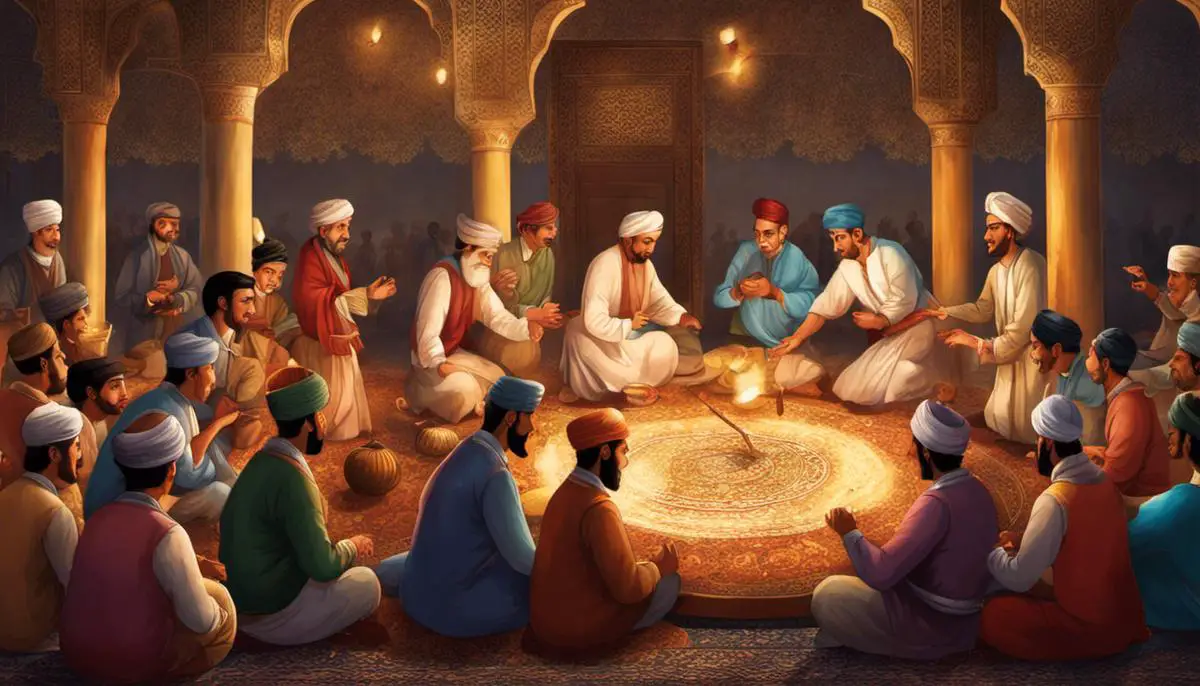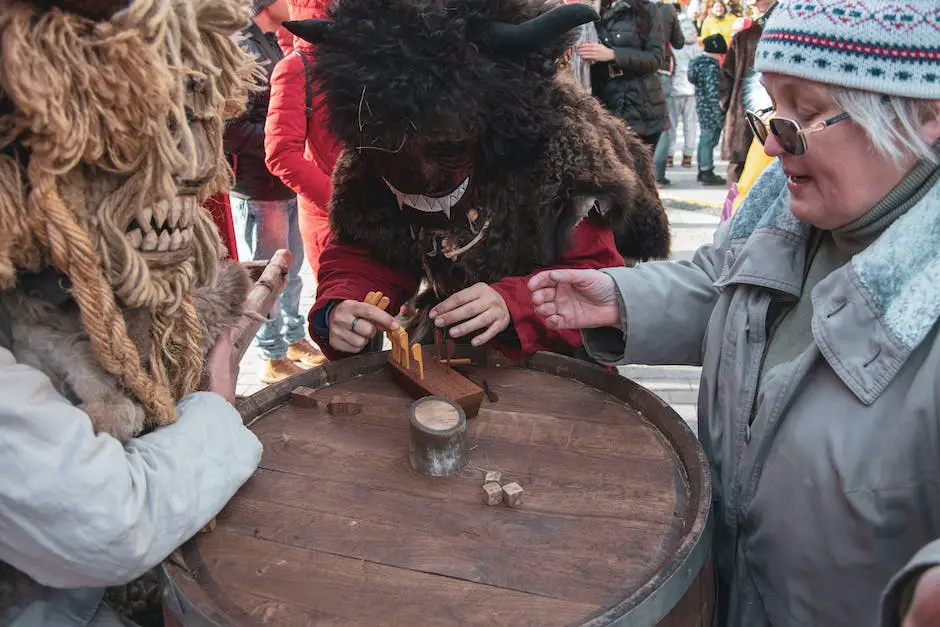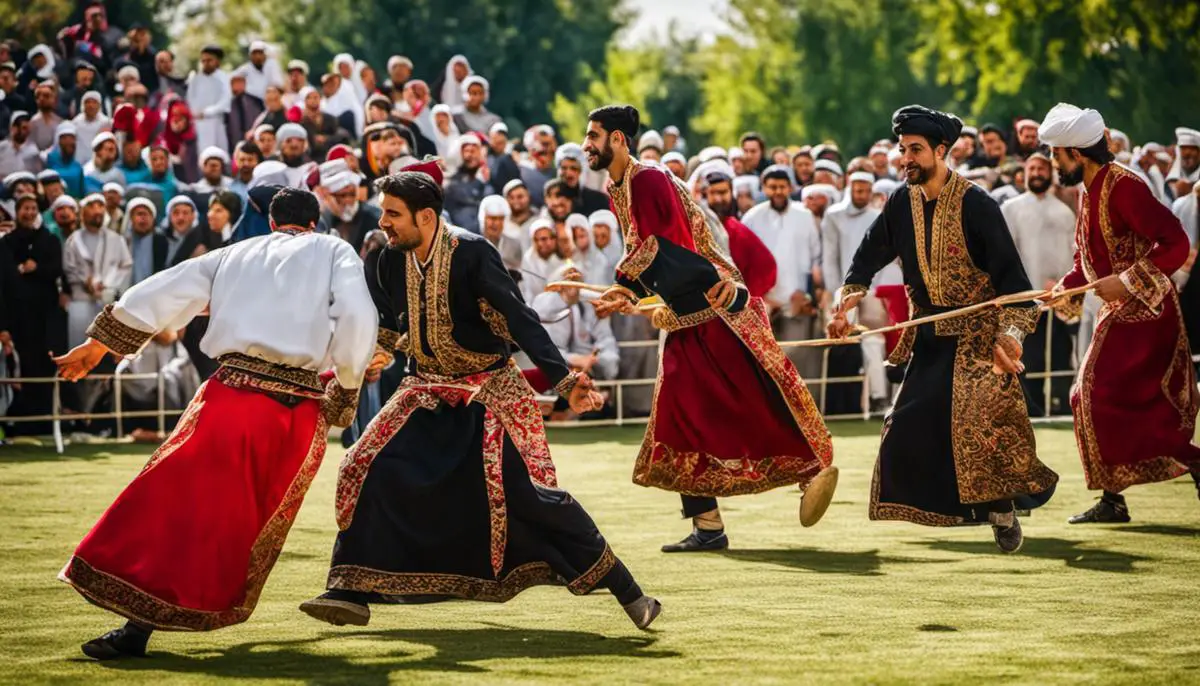The fascinating blend of antiquity and modernity that is the hallmark of Persian culture is perhaps best encapsulated in its game-centered festivities and holidays. These celebrations, rooted deeply in the region’s history, symbolize the rich tapestry of Persian society, manifesting itself in the form of vibrant games such as chess, backgammon, and polo. Woven into the fabric of Persian life, these game-centric holidays are not only a form of recreational leisure but also a tool for promoting bonding among community members and preserving the cultural heritage. This exploration delves into Origins of Game-Centered Persian Festivities, Persian Games and their Role in Festivals, Celebration and Observance of Game-Centric Holidays, and the Pivotal Influence of Gaming Holidays on Persian Culture.
Origins of Game-Centered Persian Festivities
Origins of Game-Centered Persian Festivities
Game-centric festivities in Persia, now known as Iran, have varied origins, tracing as far back as the times of the ancient Persian Empire, reigned over by the illustrious dynasties such as the Achaemenids, the Parthians, and the Sassanids. The early games played during festivities were primordially derived from rituals, religious customs, or socio-military practices, gradually evolving into celebratory customs.
Transition into Celebrations and Cultural Influence
The transition of simple games into festive celebrations profoundly improved social cohesion, through shared enjoyment and common cultural experiences. For example, Nowruz, the Persian New Year celebrated on the Spring Equinox, has traditionally included various traditional games as part of the festivities. With roots in rituals of the Zoroastrian Festival, Nowruz activities include Kabaddi (a form of wrestling) and Sizdah Be-dar, a day for outdoor activities and games.
Moreover, over time such traditions have preserved the story of Persian society, displaying its strengths, values, and customs to international spectators. Just as Chaughan set the stage for royal strength and grandeur, games like Chaal Maree (similar to backgammon) and As-Nas (a card game) reflect strategies, acumen, and sociability.
The Influence and Role of Game-Centric Festivities in Persian Society
More than just recreational pastimes, game-centric celebrations have significantly shaped Persian society’s cultural, socio-economic, and political aspects. Ranging from simple gatherings to grand holidays, these games form an integral component of Persian life and community bonding. Everyone, irrespective of age, socio-economic status, or gender, participate in these festivities, manifesting unity and camaraderie.
Such gatherings are vital in preserving and propagating the rich, historical games of Persia. Stories of legendary heroes, moral values, and even traditional food recipes are seamlessly passed down, weaving a culturally vibrant experience. Games like Polo and Chess, or “Shatranj” as known in Persian, have gained worldwide recognition, reinforcing Persian’s influence globally. Consequently, these festivities hold a paramount role in shaping conversations and diplomacy culturally and socially, worldwide.

Persian Games and their Role in Festivals
Role of Traditional Persian Games in Cultural Celebrations
The essence of Persian sports extends beyond competition and fitness. They are an integral part of holidays, festivities, rituals, and socio-cultural events. Chess, Backgammon, and Polo are among the traditional games deeply rooted in Persian festivities.
Chess
Chess, or “shatranj” in Persian, isn’t just a game; it’s a cultural emblem. An integral part of the Nowruz (Persian New Year) celebration, it symbolizes age-old Persian battle tales and military strategies. Friendly matches among families and friends foster bonding and a sense of shared identity during these festivities.
Backgammon
Known as “nard” in Persian, Backgammon is a common feature in celebrations. It signifies the importance of strategy, mathematics, and chance in Persian culture. During Nowruz and other local festivals, Persians often gather for friendly games of nard, enjoying the camaraderie amid joyful banter and laughter.
Polo
Polo, or “Chogan,” boasts a rich history linked to Persian culture and festivities. More than just a game, it represents a grand tradition and festive spectacle. Historically, grand polo matches coincided with Nowruz or other significant events, often accompanied by music, recitations, and grand feasts, making it an indispensable element of Persian celebrations.
Games in Persian Folklore and Mythology
Deeply rooted in Persian folklore and mythology, the games have real cultural and historical significance. For instance, chess, a game believed to mirror the movement of heavenly bodies, is said to have originated in Persia. Folklore tells the tale of a bereaved queen who wished to understand the battle in which her husband fell. To fulfill her desire, the vizier invented the game of chess to simulate the battlefield.
Polo has its ties with Persian mythology too. Legend has it that King Khosrow Parviz used to engage in polo games with his fifty-two companions, symbolic of the weeks in a year. Stories of their polo matches immortalized the king and his comrades’ equestrian prowess and bravery in Persian mythology.
The connection between these games, Persian traditions, holidays, and mythology underlines their intrinsic value in the culture. They serve more than just a recreational purpose but are an integral part of the Persian cultural tapestry, encapsulating the richness of their history, and heritage.

Celebration and Observance of Game-Centric Holidays
Nowruz: The Blend of Persian New Year and Backgammon Tradition
Among the Persian celebratory traditions that intertwine games into their customs, Nowruz or the Persian New Year stands out. A significant tradition during this 13-day celebration involves the playing of backgammon. It is on the sixth day of Nowruz that families traditionally gather to square off in this strategic board game. More than mere entertainment, within the Persian culture, backgammon is regarded as a medium for imparting strategic thinking and understanding of game theory. The festive spirit is further heightened by rewarding the winners with a special Nowruz treat, introducing an exciting competitive edge to the celebrations.
Chaharshanbe Soori: Jumping Over Fire
Leading up to Nowruz, Iranians celebrate Chaharshanbe Suri, or Red Wednesday, in which groups of people gather and leap over fire pits under the cloak of darkness. While the evening primarily focuses on the fire-jumping tradition which purges sins before the new year, a game of spoon-beating, known as Qashoq-Zani also takes place. The game involves someone cloaked in a chador going door-to-door banging a spoon against a bowl, in return for treats, similar to Halloween trick-or-treating in the West.
Yalda Night: The Longest Night of the Year
Yalda Night, celebrated on winter solstice, is another festivity that commonly includes games. It serves as observance of the longest night, on which family and friends gather to read poetry, tell traditional stories, and play classic games such as chess and backgammon. The inclusion of games on Yalda Night establishes unity and a playful environment as people collectively wait for the arrival of dawn.
Religious Occasions: Mourning and Fun Games
During Muharram, a month of mourning in the Islamic calendar, various street games are organized. ‘Sineh Zani’ is a particularly popular game, in which young men and adults gather in streets to form teams. As part of the game, they beat their chests in a rhythmic manner as a way to reenact the battle of Karbala and express their grief over the martyrdom of Imam Hussein.
Modern Changes: Adaptation of Western Games
Persian celebrations have evolved over time to incorporate some Western practices and games. For instance, during the birthday celebrations, young adults may engage in more modern games such as video games, card games, and other social games. These adaptations signify an ongoing cultural exchange and fusion of East and West.
Sizdah Be-dar: The Day of Outdoor Fun
Sizdah Be-dar, celebrated on the thirteenth day of Nowruz, is another game-centric celebration. As part of the tradition associated with this day, families travel to rural areas and spend the day outdoors, playing sports and games. Some of these games include soccer, volleyball, and an ancient game known as Chogan, which is similar to modern-day polo.
Conclusion
Game-centric festivities in Persia stand as heartwarming testaments to the importance of camaraderie and participation within the community. Despite the variations in the games that feature in these celebrations, their inclusion provides a unique twist that adds to the richness of Persian events and holidays. These games highlight the value placed on play, competition, and fellowship within Persian culture.

Pivotal Influence of Gaming Holidays on Persian Culture
Significance of Game-Centric Holidays in Shaping Persian Culture
These game-focused observances play a pivotal role in shaping the unique fabric of Persian culture, offering a profound influence on the arts, literature, and folklore. The creation of detailed game boards and the composition of narratives and poetry centered on games are deeply woven into the cultural tapestry.
In the heart of these traditions lies the game of chaugan, also known as polo, which takes center stage during Nowruz, the Persian New Year. As the players take to their horses, the game symbolizes themes of bravery, masculinity, and honor, fitting perfectly within the grand narratives of Persian poetry and art. It’s on this day that game performances match the rhythm of music and dancing, punctuated by feasts.
Concurrent with this, Sizdah-Bedar, celebrated 13 days post-Nowruz, presents an opportunity for children to take part in traditional games. These playful activities impart societal norms and moral codes, teaching children about fair play, competition and respect for their elders. The notable game of ‘var-be-seshani’ also educates the younger generation about the dependence of agriculture on rainfall, thereby bridging the gap between natural phenomena and cultural traditions.
As Yalda night ushers in the longest night of the year, families and friends huddle together for intense rounds of ‘Takhte Nard’, or Backgammon. This game, which depends as much on luck as on strategy, induces discussions about destiny and fate, echoing the storytelling and recitations of poetry that transpire during the night.
Cultivating Social Bonding and Influencing National Identity
These game-centric festivals are paramount in building and enhancing social cohesion in Persian society. The communal engagement while playing games offers a platform for interaction, exchange of ideas, and collective enjoyment. These gatherings foster social bonding that transcends age, gender, and social status, unifying the attendees in shared delight.
Moreover, game-related holidays offer an opportunity to instill and reinforce moral values, such as fair play, respect, teamwork, and integrity. The narratives and rules associated with these games often present ethical dilemmas that require a fair and justified decision. Consequently, players learn and internalize these values while having fun.
Finally, game-centric festivals are keystones in the national identity of Persia. As a centuries-old practice, they symbolize resilience and continuity. They simultaneously showcase the artistic flair, intellectual capacity, and cultural uniqueness of Persia to the world. The music that accompanies these games, the vibrant clothing, and the local delicacies that are served add layers to the richness of these festivals, heightening national pride and communal solidarity.
In conclusion
The existence of game-centered holidays in Persian culture is more than a tribute to the fun and entertainment a game can bring. It’s a testament to the culture’s history, values, social interaction, and identity. Their influence has survived time, and they still stand as pillars of Persian cultural communication and community today.

At the juncture of history, tradition, and community, game-centered holidays in Persia play a far-reaching role, marking the triumphs of a vibrant culture. These historic games, serving as the heart of numerous holidays, are more than just a source of entertainment; they offer a glimpse into the psyche of Persian society, provide a conduit for social interaction, and are beacons of cultural preservation. The festivities surrounding these games have seeped into various facets of Persian life, from arts and literature to folklore, inspiring countless literary and artistic expressions. Woven into the socio-cultural tapestry, these games and associated holidays promote harmony, impart moral lessons, and shape the national identity, ensuring the continued relevance of these traditions in the modern era.

